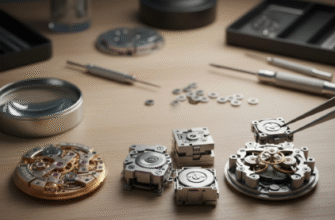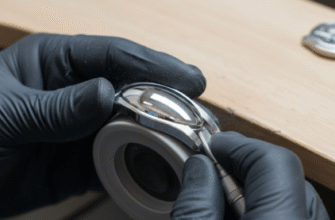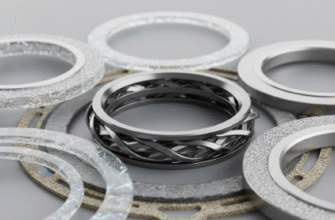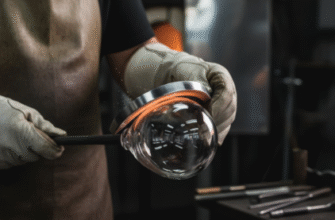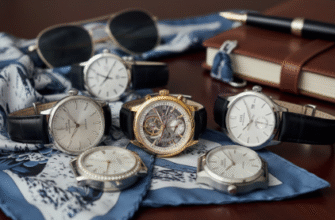The gentle, rhythmic ticking of a mechanical watch is a sound that speaks of centuries of ingenuity. At its heart lies a coiled spring, the mainspring, which acts as the powerhouse for the entire intricate dance of gears and levers. But this spring needs to be wound, to store the potential energy that will be slowly released to tell time. For most of horological history, this was a manual task, a daily ritual involving a key or a crown. The advent of the automatic, or self-winding, watch changed everything, transforming the kinetic energy of the wearer’s motion into mechanical power. This is the story of that evolution, a fascinating journey from clunky beginnings to designs of profound elegance and efficiency.
The First Steps: Bumper Automatics
The dream of a watch that wound itself is nearly as old as the portable timepiece itself. Abraham-Louis Perrelet is often credited with an early design in the 1770s, but it was English watchmaker John Harwood who successfully patented and commercialized the first automatic wristwatch in the 1920s. His design was ingenious but rudimentary by modern standards. It featured a weighted rotor that didn’t spin a full 360 degrees. Instead, it swung back and forth in an arc of about 270 degrees, bumping into a pair of buffer springs at either end of its travel. This is why these early movements are affectionately known as bumper automatics.
Each time the weight hit a spring, it would push a lever that engaged a ratchet wheel connected to the mainspring, giving it a tiny wind. While functional, the system had its drawbacks. The constant “bumping” could be felt on the wrist, and the winding was only unidirectional. The rotor’s movement in the opposite direction did nothing to power the watch, making the mechanism relatively inefficient. Furthermore, the constant impact of the rotor against the springs introduced a potential point of mechanical failure over time.
While historically significant, bumper movements were a transitional technology. Their limited rotor travel and unidirectional winding made them less efficient than later designs. The mechanical shock from the rotor hitting the buffer springs was also a long-term concern for durability.
A Full Circle: The Unidirectional Rotor
The next great leap forward came from Rolex in 1931 with their “Perpetual” movement. The key innovation was a central rotor that could rotate a full 360 degrees without any obstruction. This simple-sounding change was revolutionary. It allowed the rotor to gather momentum and spin freely, capturing far more energy from the wearer’s movements than a bumper system ever could. However, the initial versions were still based on a simple ratchet and click system, meaning they were unidirectional.
Imagine a bicycle’s rear wheel hub. When you pedal forward, the chain engages the sprocket and drives the wheel. When you stop pedaling or pedal backward, the hub makes a clicking sound as the pawls (or clicks) slide over the teeth of a ratchet wheel, disengaging the drive. The early full-rotor automatics worked on a similar principle. As the rotor spun in the “winding” direction, a gear would turn the ratchet wheel on the mainspring barrel. When the rotor spun in the other, “idle” direction, a click would simply slide over the ratchet teeth, producing no winding action. Half of the rotor’s potential was effectively being wasted, but the improvement in winding potential over the bumper was so immense that it became the industry standard for a time.
The Pursuit of Perfection: Bidirectional Winding
Engineers, by their very nature, are restless. The idea that half of the rotor’s motion was being wasted was an inefficiency that simply had to be solved. The goal was clear: create a system that could harness the rotor’s energy regardless of whether it was spinning clockwise or counter-clockwise. This quest for bidirectional winding led to some of the most clever and elegant micro-mechanical solutions in all of watchmaking.
Early Solutions: The Rocker Bar
One of the earliest and most commercially successful bidirectional systems was the Felsa “Bidynator,” introduced in the 1940s. Its design centered on a rocking bar or shuttle. This component was connected to the rotor and had two separate winding pawls. When the rotor spun in one direction, it would pivot the bar, causing the first pawl to engage the winding wheel and push it forward. When the rotor reversed direction, the bar would rock the other way, disengaging the first pawl and causing the second pawl to engage the same wheel, pushing it forward once again. It was a clever, if somewhat complex, solution that effectively captured motion from both directions. Many other brands developed similar systems based on this principle of a rocking or shuttling component that would select which pawl to engage.
The genius of bidirectional winding lies in its ability to convert oscillating motion into a single, continuous rotational direction for winding the mainspring. This dramatically increases the winding efficiency, ensuring the watch remains fully powered even with less active wearers. The core challenge was designing a compact and reliable transmission to achieve this.
The Pinnacle of Simplicity: Reversing Wheels
While rocker-based systems worked, the true breakthrough in elegance and efficiency came with the development of reversing wheels. This system, most famously perfected by Rolex and Eterna, is a marvel of simplicity. It typically consists of two identical-looking gears, sitting side-by-side, that are driven by the rotor. The magic happens inside these wheels.
Each wheel contains tiny, internal jeweled pawls or clutches. When the wheel is driven in one direction, these pawls lock against an inner hub, causing the entire wheel to turn as a single unit and transmit power. When the wheel is driven in the opposite direction, the pawls disengage and click idly, allowing the outer gear to spin freely around the inner hub without transmitting any power. By arranging two of these wheels in the gear train, one is always “locked” and winding while the other is “freewheeling,” no matter which way the rotor spins. This seamless and instantaneous switching makes the system incredibly efficient and robust, with fewer large moving parts than a rocking bar system.
Modern Masters: Pellaton and the Magic Lever
The evolution didn’t stop with reversing wheels. Two other designs, in particular, stand out for their unique and highly effective approaches to bidirectional winding.
IWC’s Pellaton System
Developed in the 1950s by Albert Pellaton, the technical director for IWC, this system is renowned for its sheer robustness. Instead of gears, it uses a heart-shaped cam mounted off-center on the rotor’s axle. As the rotor spins, this cam pushes a large rocking bar back and forth. At the end of this bar are two jeweled pawls. With each swing of the bar, one pawl pulls the winding wheel while the other slides over its teeth, and on the return swing, the roles are reversed. It’s an over-engineered, powerful system that is exceptionally good at capturing even the slightest movements and is famously durable.
Seiko’s Magic Lever
At the other end of the complexity spectrum is Seiko’s “Magic Lever,” a testament to Japanese design philosophy. Introduced in 1959, it is brilliantly simple. The system uses a single, V-shaped lever with hooked ends. An eccentric post on the rotor’s drive wheel fits into the V-crook of the lever. As the rotor turns, the eccentric post pushes and pulls the lever. In one direction, one hook pulls the teeth of the winding wheel. In the other direction, the other hook pulls the same wheel. That’s it. With just one primary moving part, it is incredibly efficient, easy to service, and cost-effective to produce, and it remains a cornerstone of many Seiko movements to this day.
From the jarring bump of Harwood’s first design to the silent, seamless efficiency of modern reversing wheels and the Magic Lever, the evolution of the watch winding mechanism is a microcosm of the entire history of horology. It is a story driven by a relentless pursuit of efficiency, reliability, and mechanical elegance, ensuring that the simple motion of an arm can continue to power the intricate heart of a timepiece on the wrist.

